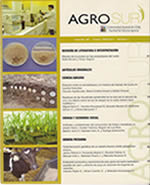Are we losing sight of insect biological control in cyberspace?
Main Article Content
Abstract
Insects are omnipresent across the globe, assume crucial roles within the world’s natural and agricultural ecosystems, and generate billions of dollars of economic benefits to human society. Insect numbers are rapidly declining and their associated ecosystem services are degrading at unprecedented rates, yet little is known about how such trend is viewed by the public. Therefore, in this exploratory study, we venture into the emerging field of ‘culturomics’ and make use of text-mining tools and social-media analytics to assess temporal and geographic trends in the cultural visibility (or ‘saliency’) of various biological control concepts and organisms. Particular species, such as the predatory mite Phytoseiulus persimilis, Oecophylla weaver ants, and the encyrtid wasp Anagyrus lopezi, receive sustained and comparatively high public interest, and research is warranted to assess determinants of their popularity. Google Trends time lines equally reveal how a recent biological control effort against the invasive cassava mealybug, Phenacoccus manihoti (and its associated media campaign), triggered online social interest. Lastly, we contrast multi-year Google search volume between individual countries to emphasize how online public interest in a particular biological control organism can differ between contexts, cultures and geographies. Though exploratory in nature, our study underlines the urgent need for today’s entomologists, agro-ecologists and biological control practitioners to effectively engage with the humanities and (digital) social scientists. Our work can help steer the development of adequate information to promote awareness-raising campaigns, and inform policy dialogue that safeguards the overall relevance of ecologically-based pest management in an increasingly globalized and digitalized world.

